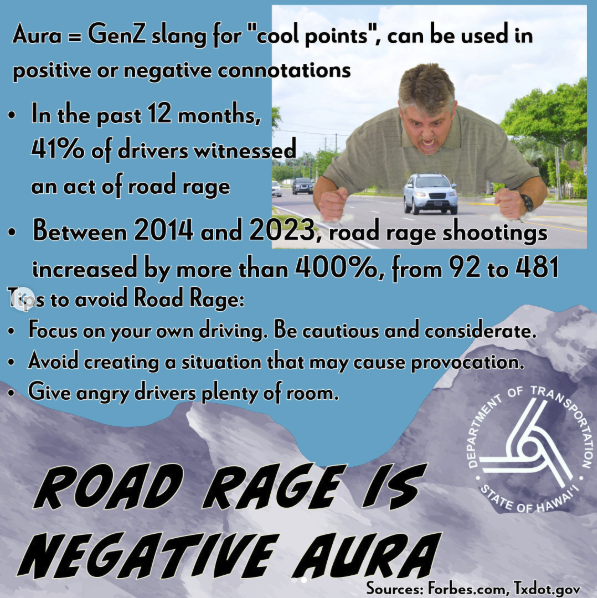Reporting Dangerous Drivers
We encourage any bicyclist that encounters a dangerous driver to report it to local law enforcement. By providing HPD details of the incident they can have an officer confront the driver, educate them on the laws and rights of cyclists, and hopefully the experience will teach them how they should act around cyclists and that their actions do carry consequences. Another reason to call HPD is this is that there will be a record that this driver was reported as being dangerous.
If you’re riding your bicycle legally (following the rules of the road, abiding by traffic signs/signals, etc.) and safely by using bike infrastructure or taking the lane when required, and a driver still harasses you, try not to get too heated and follow these steps to take action and report the hazardous driver.
How to report a hazardous driver
For O‘ahu:
If the harassment is serious enough to make you feel unsafe and threatened with harm, move to a safe place and call 911.
1. Try your best to make a mental note of the license plate and as many details as possible of the vehicle, driver, and driver’s actions.
-
- It can be a helpful practice to train yourself to look for and remember the license plate. You could make up a phrase starting with the letters (with 26 letters there are more alphanumeric options/combinations than numeric 0 to 9).
2. Pull over in a safe location and call 911 (police, non-emergency) or HPD main line at (808) 529-3111. Do not pursue the hazardous vehicle!
-
- If the aggressive driver was mainly dangerous to you by driving intentionally close, throwing items, honking angrily, or yelling, try not to lose your cool and get mad. Continue riding safely and predictably until reach your destination or somewhere you can safely pull over out of harm’s way to call HPD.
3. Tell police dispatch you want to report a dangerous car/truck/bus driver and would like to report to a police officer.
-
- Provide information to the dispatcher including the vehicle’s license plate number, description of the vehicle (make, model, color, any additional identifying observations) and driver identifiers (gener, hair color, size, etc.), time, location, and the direction the vehicle is traveling if you recall.
- Give them your name, phone number, and current location where the officer can meet you.
4. Explain why the driver is dangerous.
-
-
Once the officer arrives, explain what the driver did that was dangerous and made you feel threatened for your safety. You may be asked to fill out a police report. Request that you’d like the officer to visit or call the driver and explain to them the rights of cyclists and that their driving was dangerous. Ask the officer to please call you back and report what happened.
- The officer cannot arrest or cite the driver, because they did not witness the incident, but they can educate the driver. (See HPD’s Hazardous Driving Policy below)
-
View HPD's Hazardous Driving policy
Incidents of hazardous driving shall be handled in accordance with the procedures outlined herein.
CRITERIA FOR DISPATCHING OFFICERS TO HAZARDOUS DRIVING CALLS
Upon receipt of a call of an ongoing hazardous driving incident, the dispatcher shall make the following determinations before dispatching an officer:
If the caller wishes to remain anonymous and reports an ongoing hazardous driver but no other information is obtained:
A. The Communications Division shall make an all-points bulletin (APB).
B. Officers shall check for vehicles based on the APB information, i.e., vehicle description, driver’s description, direction of travel, etc.
C. No officer will be sent to the initial location.
D. No report is necessary.
If the caller wishes to remain anonymous and reports an ongoing hazardous driver with a vehicle license number:
A. The Communications Division shall make an APB.
B. Officers shall check for vehicles based on the APB information.
C. No report is necessary.
If a person makes a complaint of an ongoing hazardous driver with a vehicle license number and/or is in constant communication with dispatch:
A. The Communications Division shall make an APB.
B. An officer shall be sent to interview the complainant.
1. If the officer stops the vehicle, the officer shall take appropriate action based on any violations observed by the officer, and a numbered report shall be made.
2. If the officer does not locate that vehicle, the officer shall make a follow-up at the registered owner’s residence or request that a follow-up be done at the registered owner’s residence.
a. If the registered owner is found, the officer shall take appropriate action, and a numbered report shall be made.
b. If the registered owner is not found, the officer making the follow-up shall notify the officer making the initial report.
(1) The command where the registered owner’s residence is located shall send a form letter informing the owner of the alleged violation.
(2) The officer’s report shall be closed with the action taken. If a complaint is made sufficiently after the occurrence of an incident that it is unlikely that officers could locate the vehicle in question, the available information
about the incident shall be entered into the Computer-Aided Dispatch (CAD) system and retained in accordance with standard procedures.
[Source: https://www.honolulupd.org/policy/policy-hazardous-driving/]
Is this worth your time?
The process of reporting to HPD is quick, and maybe take the officer 15 minutes to come to follow-up.
Capt. Thomas Taflinger of HPD’s Traffic Division was interviewed, telling news “a good description of the location, license plate number, and driver will help — even if officers don’t catch the suspect in the act.”
“If we can ascertain the license plate number and match the car and everything matches, officers will follow up and go to the house and talk to whoever was driving the car and talk to them about the driving,” Taflinger said. “It shows the driver there are eyes watching, and it wasn’t just the officers who saw it. The community’s eyes on the road are just as important as anybody else’s.” [source: KHON, 2017]
Drivers of motor vehicles that are intentionally hostile to people bicycling are often serial offenders. By reporting the aggressive or hazardous behavior of the driver to local police it allows the incident to be documented with law enforcement and more importantly gives officers a chance to intervene with the driver before they repeat their actions to another fellow cyclist or vulnerable road user. If that same driver does harm another bicyclist at a later date, the information in the Incident Reports will increase the likelihood that justice is served.
for Hawai‘i Island:
If you see someone driving in a dangerous or reckless manner you can report it to the Hawai‘i Police Department.
In most cases, if you see a crime being committed, please contact Hawai‘i Police Department’s non-emergency line at (808) 935-3311 or 911 if it is an emergency.
“If you see a motorist driving violating one or more traffic laws, we encourage you to report it to our Traffic Services Section.
Provide us with the vehicle’s license number, make and color, along with the date, time, location and a description of the violation. The Traffic Services Section will send a letter to the vehicle’s registered owner and convey what was observed. Police will not reveal the identity of the person who made the complaint.”
Download and fill in the Community Road Safety Watch form (PDF), then submit it to the Traffic Services Section by any of the following methods:
By Mail
Hawai‘i Police Department
Traffic Services Section
349 Kai‘olani St.
Hilo, HI 96720
In Person
Drop if off at any police station. (There are eight district stations across Hawaiʻi Island.)
for Kaua‘i:
For non-emergencies call (808) 241-1711.
You can submit a General Report of crime to the Kaua‘i Police Department through their online crime reporting system here.

